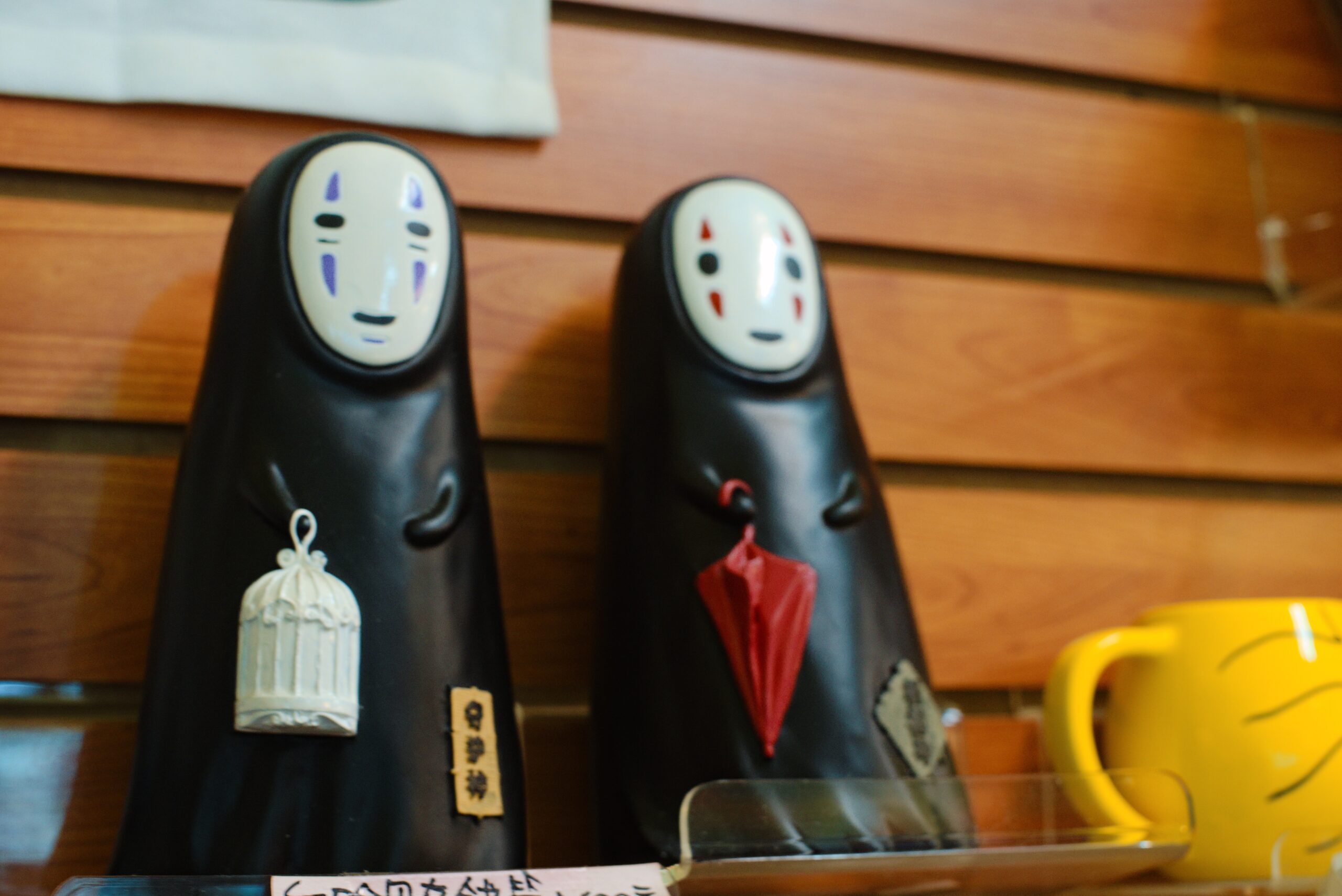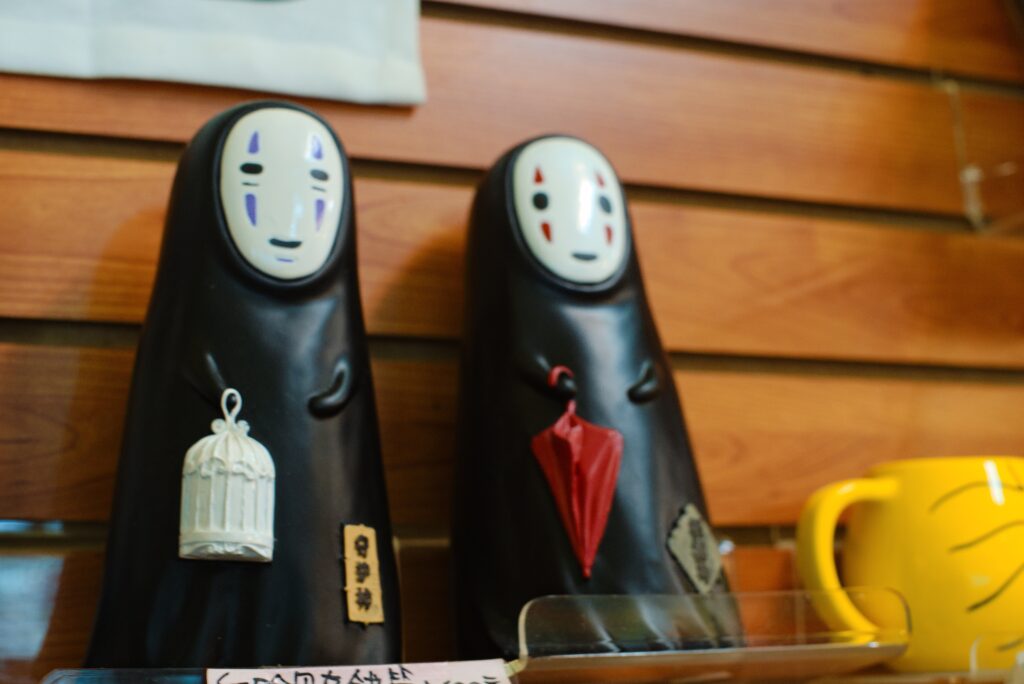WATCH – A Little Girl Dressed as No-Face From Spirited Away and Accidentally Scared Her Classmates

In a room filled with tiaras and teddy bears, superheroes and smiley pumpkins, a small figure floated in silence. No laughter. No words. Just a white mask, a black robe, and the kind of stillness that made the noise around her feel louder. She was two years old. But she moved like she had come from another world.
The other kids didn’t know what to do with her. Some stared. One cried. And the world watched. Her name is Momo, and what she wore that day wasn’t just a costume. It was a declaration.
When a Child Chooses Fear Over Cute
In a classroom filled with sparkly princesses and pint-sized superheroes, one child stood out—not by trying to, but by choosing truth over trend. She wasn’t covered in glitter or dressed as a cartoon. She didn’t twirl or pose. She simply arrived, silent and still, in a black robe and a pale white mask. A haunting presence in a sea of smiles. She was only two years old, but the energy around her shifted like she had stepped out of a different realm. Her name is Momo. And her costume wasn’t just cloth and paint. It was a quiet rebellion. A reminder that even the smallest among us have the power to disturb, awaken, and move the world.
Most children her age would have picked something safe for Halloween—something cute, familiar, easy to digest. But Momo, a little girl from Kaohsiung, Taiwan, didn’t want to be a fairy or a kitten. She wanted to be No-Face, the mysterious and voiceless spirit from Spirited Away. Her mother, Elmo Chan, supported that vision without hesitation. She crafted the look herself—an all-black robe, a white, expressionless mask—and helped Momo embody the eerie silence of the character.
Momo didn’t break character. She didn’t laugh, didn’t speak. She glided through her kindergarten Halloween party like a ghost in a dream. Some children stared. One cried. And without meaning to, she went viral. People around the world shared the image of this tiny girl with the unblinking mask, calling it unforgettable.
And she did it again the next year—this time as Ryuk, the death god from Death Note. It was another stroke of childhood originality and motherly commitment. Momo’s mom spent three hours putting the costume together. But the intention wasn’t to top last year’s success. “I just wanted to do my best to allow Momo to dress up as the character she wanted,” Elmo said in an interview with BuzzFeed News. “I had no idea it would go viral again.”
Momo’s love for the strange wasn’t random either. Her mom added, “Momo loves scary things.” And even when most of her classmates were no longer frightened, she still managed to make a new one cry.
This story isn’t just about costumes or viral fame. It’s about what happens when someone—even a child—is given the freedom to express what feels real. And what happens when that expression shakes the comfort zones of those around them. Because sometimes, the most courageous act is simply showing up as who you are.
Why Different Feels Scary — And Why That’s a Good Thing
When Momo walked into that classroom dressed as No-Face, she didn’t just break the Halloween dress code. She broke the pattern. And for many people, especially young children, that’s unsettling. In psychology, there’s a term for this reaction—salience bias. It refers to how our minds instinctively lock onto what stands out. Our brains are wired to spot what doesn’t fit, because for most of human history, noticing the unfamiliar was a matter of survival. The rustle in the bushes. The stranger in the tribe. The silence in a room where there was just laughter. It’s not just that difference feels unfamiliar—it often feels unsafe.

Momo’s costume stirred something deeper than visual surprise. It wasn’t loud or flashy. It didn’t beg for applause. It simply confronted others with something still and strange. In a sea of pastel and primary colors, she wore black. While others performed joy, she embodied silence. And in that dissonance, people projected their own discomfort. But here’s the truth: the things that rattle us often point to something worth paying attention to. We tend to fear what we haven’t yet learned to understand. And that fear can either make us retreat—or reflect.
Children, like adults, are taught what’s acceptable through repetition. They learn early what earns approval and what gets side-eyed. But sometimes, someone like Momo comes along and shows us what it means to move outside the mold without apology. Her presence made her classmates pause, made adults marvel, and made the internet talk. Why? Because when someone is unapologetically themselves—especially when it disrupts what we expect—it forces the rest of us to ask whether we’ve been hiding behind the masks of fitting in.
What Momo teaches us is that discomfort isn’t always a problem. Sometimes, it’s a signal. It tells us we’ve encountered something unfamiliar. But rather than rushing to escape it, we can lean in and ask why it moves us at all. In a world addicted to sameness, the rarest thing we can be is real.
The Courage to Be Uncute
From the moment children start exploring the world, society whispers expectations. Particularly for girls, there’s often an undercurrent: be likable, be soft, be visually pleasing. These early messages quietly shape identity—long before a child learns to speak her name. Now imagine a toddler, barely two years old, intentionally subverting that norm: choosing not sweetness, but stillness; not charm, but chill. That was Momo, embodying No‑Face instead of a princess. She didn’t want to be cute. She wanted to be real.
Studies confirm that these pressures are more than social norms—they’re psychological currents. Research suggests that by age six, girls start to internalize the belief that brilliance is more a male trait, leading them to distance themselves from activities labeled as requiring “smarts.” Even earlier, girls are already associating their sense of worth with how they look rather than how they shine.
Moreover, body image pressures begin before adolescence. Surveys by mental health organizations show that girls report higher rates of appearance-related concerns than boys as early as late childhood—sometimes avoiding activities like gym class because of self-consciousness about how they look.
Momo’s choice wasn’t about rebellion—it was quietly radical. She moved through her school party not seeking adoration, but embodying what she found beautiful in her own way. Her mother didn’t steer her toward “acceptable” costumes. Instead, she co-created something centered on Momo’s interior world.
This level of creative trust—and allowing children to embody whatever feels true for them—is what psychologists call strengthening intrinsic motivation. It builds a foundation of authenticity rather than approval-seeking. In a world where girls often learn to tailor themselves to be likable, Momo’s choice reminds us of something foundational: self-expression is not a performance—it’s a declaration.
When we let children explore who they are, unscripted and uncensored, we aren’t just giving them costumes—we’re giving them courage.
How to Nurture Creative Identity in Children
Creative expression isn’t just about art supplies or costumes. It’s about creating space—emotional, psychological, and practical—for children to explore who they really are. If you want to raise kids who don’t just blend in but break molds, here’s where it begins:

- Listen Without Editing
When a child expresses an unconventional idea, resist the urge to “fix” or filter it. Instead of asking “Why that costume?”, ask “What do you love about it?” Listening without judgment sends the message: Your mind is safe here. - Support the Vision, Not Just the Outcome
Momo’s mom didn’t stop at saying yes—she showed up. She spent hours helping Momo become what she imagined. You don’t need to be crafty to support a vision. Be present. Be curious. Be a partner, not a perfectionist. - Celebrate Commitment Over Conformity
Momo didn’t just wear a costume—she became the character. That kind of commitment deserves more praise than how “cute” the costume looks. Recognize focus, not just aesthetics. It reinforces inner motivation, not external validation. - Let the Weird Be Wonderful
Children who gravitate toward the strange or unsettling are often deeply imaginative. Instead of brushing it off, lean in. Ask questions. Encourage the exploration. What others call “weird” may actually be wisdom in disguise. - Pass the Torch, Don’t Just Hold It
Elmo Chan plans to teach Momo how to make her own costumes one day. That’s powerful. Teach kids how to create, not just consume. Help them move from asking to building. Skills fuel freedom. - Normalize Making Others Uncomfortable
When Momo’s costume made a classmate cry, her mom didn’t apologize—she contextualized. Teach children that their authenticity might not always be easy for others to digest. That’s not a problem. That’s power. - Be the Mirror, Not the Mold
Don’t shape your child in the image of your regrets. Reflect who they truly are back to them. See them clearly. Support them fully. Let them grow into someone even you don’t fully understand yet.
These aren’t just parenting tips. They’re invitations—to create a world where children don’t shrink to fit expectations. Where they grow into the fullness of their voice, their vision, their soul.
The Mask That Told the Truth
Momo didn’t wear her costume to impress anyone. She wasn’t trying to be liked, admired, or even understood. She simply showed up as what felt true to her. And maybe that’s what unsettled people—not the mask, but the honesty behind it. Because in a world where we’re taught to smooth our edges, to decorate ourselves in likability, someone who arrives without explanation can feel disruptive. But maybe that’s exactly what we need.
We’ve grown so used to filtering our words, adjusting our tone, and dimming our light just enough to fit the room, that we forget who we are beneath the performance. Momo didn’t forget. She didn’t water herself down. She chose stillness when others chose sparkle. She committed to character when others cracked under pressure. And she didn’t apologize for being different. That kind of presence doesn’t just shift a room—it teaches it.
So the next time you feel the urge to play small to make others more comfortable, think of her. Think of the girl in the ghost mask who said nothing, but spoke volumes. The girl who reminded us that the real costume isn’t the one we put on for Halloween—it’s the one we wear every day when we hide who we really are. Take it off. Show up. Not to be liked, but to be whole.
Loading...

